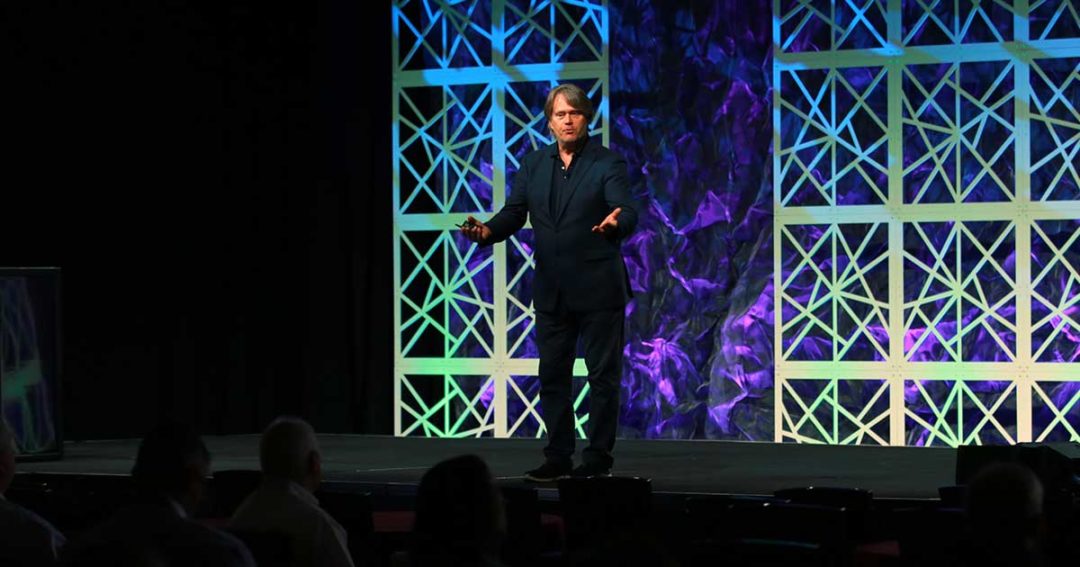
What are the odds for a recession?
The economy is heading toward a soft landing, says economist Steve Rick.
The big question people have for Steve Rick: Are we heading into a recession?
His answer: Barring an expansion of the war in Ukraine or a virulent coronavirus strain, no. Following 3% growth in 2022, he expects the economy will gradually slow to its long-run average of 2%.
Rick, CUNA Mutual Group chief economist, provided an economic outlook for 2022 and beyond Tuesday during the 2022 CUNA Finance Council Conference in Las Vegas.
Higher consumer confidence and lower business uncertainty will keep economic growth in positive territory, he says. Confident consumers spend more, and consumer spending drives 70% of the U.S. economy.
Plus, infrastructure spending will add 0.5% to gross domestic product (GDP) annually through 2026.
It will take auto manufacturers several years to restock dealers’ depleted inventory, Rick says. Vehicle inventories are down 80% due to supply chain issues.
“Growth will slow over the next couple of years and hopefully achieve a soft landing,” he says. “The Fed hopes to lower inflation without raising unemployment.”
While the inflation rate is at a 40-year high of 8.2%, it’s temporary, Rick says. The main factors driving inflation include pent-up demand for goods and services, supply chain disruptions that have reduced inventory, rising energy and commodity prices, massive fiscal stimulus, a lower dollar exchange rate that raises import prices, and rising housing and medical care costs.
“There are too many dollars chasing too few goods,” says Rick, who expects the inflation rate to decline to 7% by year’s end and continue to trend downward in the next couple years. The Federal Reserve’s target inflation rate is 2.5%.
The implications for credit unions:
- More financial strain on members due to higher prices.
- Rising loan delinquencies, although delinquency rates are near historic lows (0.53%). The long-run delinquency rate is 0.75%.
- Higher interest rates.
- Higher operating costs, leading to lower net income for the next couple of years.
- Higher labor costs. Labor shortages will continue, leading to higher wages and training costs, higher turnover, and a shift of bargaining power to employees.
“There are two jobs for every unemployed person,” Rick says. “We’ve never seen that before. People usually quit for jobs that provide higher wages, and that raises wages across the board.”
There are also other factors affecting the economy.
The federal funds rate will exceed 2% by year-end 2022 and 3.25% by year-end 2023 as the Fed aims to rein in inflation to its 2.5% long-range average.
Mortgage rates will hover around their long-run average of 5.5%. Refinance volume has fallen 70% due to rising rates, although home equity lending is booming, Rick says.
Housing price increases will continue, although they’ll recede from last year’s 18% increase. Rick expects home prices to rise 9% in 2022 due to strong demand from millennials—consumers in their prime home-buying years—and low housing inventory.
The U.S. typically has three million homes for sale—but currently has only 900,000.
Rick doesn’t expect a repeat of the housing market crash because circumstances today are different. “There are better underwriting standards,” he says. “Lenders aren’t making crazy subprime mortgages.”